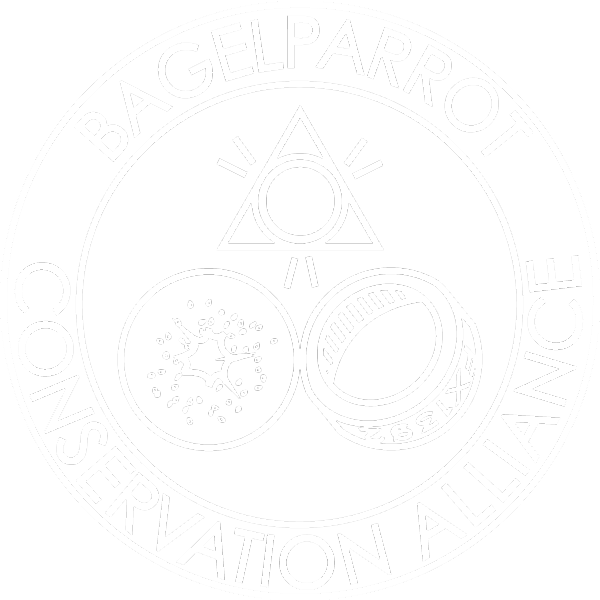At this very moment, we’re going through what scientists call the sixth mass extinction. The last such event – the one that wiped out the dinosaurs – was 65 million years ago, caused by asteroids and volcanic activity. This time around, though, biodiversity is disappearing from our planet faster than any other period: 100 to 1000 times the natural extinction rate¹. When wildlife species disappear, ecosystems fall apart. Scientists warn that with the earth’s ecosystem is rapidly reaching a tipping point that is unsustainable for human life².
The cause? Humans. Deforestation and land conversion for industrial agriculture is the main driver of the wildlife extinction crisis³. We’re clearing our rainforests faster than ever before for stuff like palm oil and timber. The problem is further exacerbated by human-induced climate change. Then there’s that distinctly human invention: poaching for the wildlife trade.
Parrots are one of the first indicators of this mass extinction. The most threatened birds are the ones native to the tropics: the most deforested areas on Earth⁴. Nearly a third of all parrot species are threatened for extinction. Moreover, because they’re so desired as pets, hundreds of thousands of wild parrots are being poached from the wild every year. No other group of birds has been subjected to greater exploitation than the parrot. Yet, because we have little data on actual population numbers, most species are not even labeled as imperiled until it is too late.
We’re now on the verge of “too late.” We’re fighting for parrots because we still can, and we believe the most effective way is through conservation education and reintroduction programs. Conserving parrots can help all other wildlife, too. Flying great distances to forage for food and nest, they cover more area than any other animal. Parrots are an umbrella species: when you conserve the large habitats where they live, you end up protecting all the wildlife that lives in the same forest.
Our planet needs biodiversity so it can continue sustaining life. But, conservation needs to be done by humans because humans caused the damage. Bagelparrot was founded in part to encourage conservation of parrots as a vehicle toward broader conservation. The rainforest now doesn’t seem so unfamiliar or far away. And when we have something to fight for, we start doing a little bit more every day.
Parrots are an umbrella species: when you conserve the large habitats where they live, you end up protecting all the wildlife that lives in the same forest.
Recently Extinct
Pinta Island Tortoise, 2012
Western Black Rhinoceros, 2011
Caribbean Monk Seal, 2008
Yangtze River Dolphin, 2006
Mariana Mallard, 2004
Pyrenean Ibex, 2000
Canarian Oystercatcher, 1994
Ivory-billed Woodpecker, 1994
Javan Tiger, 1994
Golden Toad, 1989
Dusky Seaside Sparrow, 1987
Japanese Sea Lion, 1974
Mexican Grizzly Bear, 1964
Chivian, Eric, and M. D. Aaron Bernstein. “How our health depends on biodiversity.” Center for Health and the Global Environment, Harvard Medical School, Boston, MA, 2010.
Pappas, Stephanie. “Earth’s ecosystems nearing catastrophic ‘tipping point,’ warn scientists.” The Christian Science Monitor. 7 Jun 2012. Web. 18 Apr 2014.
Sodhi, Navjot S., Barry W. Brook, and Corey JA Bradshaw. “Causes and consequences of species extinctions.” The Princeton Guide to Ecology (2009): 514-520.
Jetz, Walter, David S. Wilcove, and Andrew P. Dobson. “Projected impacts of climate and land-use change on the global diversity of birds.” PLoS biology 5.6 (2007): e157.


